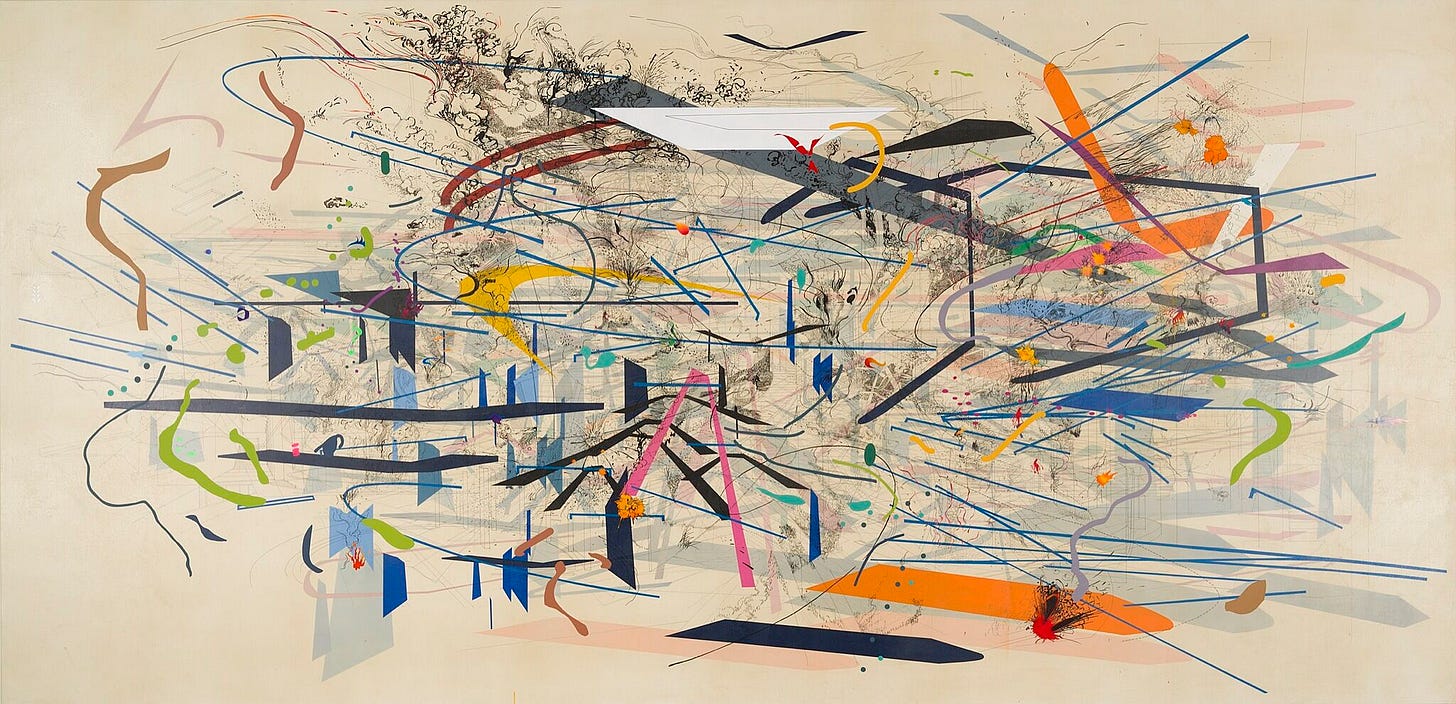🔅 From Revolutionary Memorials to Madagascar's Black Gold
Star Architects, Record-Breaking Women & Luxury Fish Eggs

Good Morning from Côte d’Ivoire!
Designing a Mausoleum for “Africa’s Che Guevara”: A Star Architect’s Newest Mission

When you’re the first African architect to nab the Pritzker Prize, expectations tend to run high—especially back home. Francis Kéré, originally from the tiny village of Gando in Burkina Faso, has built everything from schools and parliament buildings to an art museum in Las Vegas. But his latest gig? Constructing a grand memorial for Thomas Sankara, the visionary Burkinabè president revered as “Africa’s Che Guevara.”
A Monument to a Revolution
Sankara, who led Burkina Faso from 1983 until his assassination in 1987, is remembered for championing anti-corruption, women’s rights, and infrastructure projects that made him a continental hero—and an enemy of more “conservative” forces. President Ibrahim Traoré recently decided it was high time Sankara and the 12 aides killed alongside him had a fitting mausoleum. And thus enters Kéré, who quipped, “What a project, what a challenge!”
Kéré’s design showcases a cool trick—literally. Built using laterite, the same clayey earth local villagers traditionally use to keep water fresh, the domed structure stays naturally ventilated. The idea is for visitors to wander in and think, where’s the AC? only to discover it’s a classic bit of Burkinabè engineering. “That’s my mission,” Kéré says, “showing how local techniques can offer 21st-century comfort.”
In an era of blah marble monuments, the Sankara memorial will be a lively 14-hectare park, complete with an 87m tower, an amphitheater, and cozy spots where people can gather for weddings or picnics. “We want a place of life,” Kéré insists, not a somber shrine to sorrow. Beneath an oval-shaped, eye-like canopy, Sankara and his fellow revolutionaries will rest in peace—encased in concrete, but with beams of daylight filtering in through small openings.
From Gando Kid to Heroic Builder
Kéré, once teased for constructing a school in his hometown before even building a home for his own parents, isn’t new to being a local hero himself. His passion for giving back has carried him from a rural childhood to global acclaim—yet he still remembers the day he stood (trembling) before Sankara, daring to ask what the revolution meant for young Burkinabè. Four decades later, he’s leading an internationally watched memorial project in Sankara’s honor.
Sankara’s story—censored for years after his demise—has roared back under the current government. His remains, once in a mass grave, have been moved, a major boulevard bears his name, and the revolution’s ideals hum again in the capital’s streets. In Kéré’s hands, Sankara’s final resting place is destined to become a symbol of national pride, bridging tradition with modern creativity.
As Kéré puts it: “Who could have known I’d be building Sankara’s resting place, 40 years later? That’s the power of architecture. It can honor the past and, at the same time, guide us into the future.”
Lovely!
Women Artists Lead the Way in African Art Sales—And It’s No Fluke
Not long ago, the idea that female African artists could outsell their male counterparts seemed unimaginable—yet they’ve done just that for two years running, despite an overall slump in the African art market.
That’s according to ArtTactic, which reports that in 2024, women controlled 52.8% of auction sales—totaling $22m and featuring 452 female artists. They also commanded the top five sales slots.
The biggest name of all? Julie Mehretu, whose abstract painting Mumbaphilia (J.E.) reached a hammer price of $5.8m at Christie’s. Ethiopian-American Mehretu has been the top-selling African artist across genders, firmly cementing her place in the global art canon.
Beyond Mehretu, other African women artists—like modernist Irma Stern and contemporary painters Njideka Akunyili Crosby, Toyin Ojih Odutola, and Marlene Dumas—also scored million-dollar sales, illustrating a powerful market pivot. Says ArtTactic’s COO Lindsay Dewar: “This is a genuine marker of change, especially given that women artists globally haven’t achieved overall market parity yet.”
How Did We Get Here?
Auction houses, once reluctant to position African women in prime sale slots, now frequently present them alongside “blue-chip” names such as Andy Warhol. Another part of the equation? Collectors are showing real enthusiasm for emerging female talents, whose representation in auctions has soared 130% since 2015. Local dynamics also play a role. In South Africa, for instance, auction house Strauss & Co notes that women—like revered modernist Gladys Mgudlandlu and pop-contemporary stalwart Esther Mahlangu—frequently command top prices, whether their work is modern or cutting-edge contemporary.
Nevertheless, the African art market is still in a slump: overall values slid 45% last year, and the average price for African women’s work stands at around $23,500, dwarfed by the global women’s average of $180,000. Structural hurdles haven’t vanished, either: thin infrastructure, patchy representation, and old-school gender biases continue to affect many emerging women artists.
From Lemurs to Luxury: Madagascar’s Great Caviar Coup
Who would’ve thought Madagascar—best known for its postcard beaches, baobab trees, and lemurs—would muscle into the rarefied world of caviar? Turns out the warm waters of Lake Mantasoa, located 1,400 meters above sea level, are catapulting the island nation past traditional caviar powerhouses like Russia, Iran, and China. Credit goes to three French entrepreneurs—Delphyne and Christophe Dabezies plus Alexandre Guerrier—who launched Acipenser in 2009. A bold bet, yes, but it’s paying off in the shape of Rova Caviar, now starring on Michelin-star menus.
Caviar, of course, is no simple snack; it’s basically edible diamonds. Most premium caviar used to come from slow-growing sturgeon in frigid Caspian waters, but that’s shifted amid overfishing and new regulated farming. Enter Madagascar, whose mild year-round temperatures mean sturgeon can mature faster without skimping on flavor.
It wasn’t all smooth sailing, however—initial attempts at importing fish eggs floundered. But after a few misfires, Acipenser got 35,000 sturgeon eggs up and growing. Today, they maintain some 60,000 fish, including the crème de la crème: Beluga, Russian, and Siberian sturgeon, among others.
Keeping the fish well fed and building elaborate enclosures cost a small fortune, but Acipenser refused to compromise on quality. Harvesting requires ultrasound scans to pinpoint the perfect roe, eggs are carefully cleaned and salted, and subpar pearls get axed. Then the “liquid black gold” is chilled for four months to earn its signature nutty aroma. The result? Madagascar’s Rova Caviar now supplies 90% of its yield to Europe and has taken pride of place in 15 Michelin-starred restaurants—no small feat for an island that used to be known mostly for its vanilla and its wildlife.
As if that weren’t enough, Acipenser is gunning for an even bigger catch: Beluga caviar. Within two years, those prized fish—whose roe can fetch up to $20,000 per kilo—will start delivering the goods. With that, Madagascar could officially become a caviar giant, proving to the world that the land of sun also knows how to cultivate the very definition of luxury cuisine.
Looks like the island is elbowing its way into global gastronomy—and, by all accounts, is savoring every decadent spoonful.
Food for Thought
“Insanity can be treated but not foolishness”
— Tanzania Proverb





